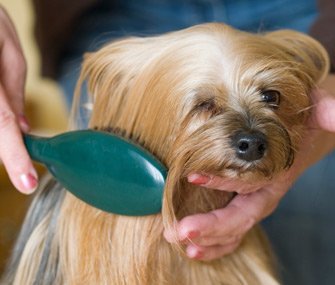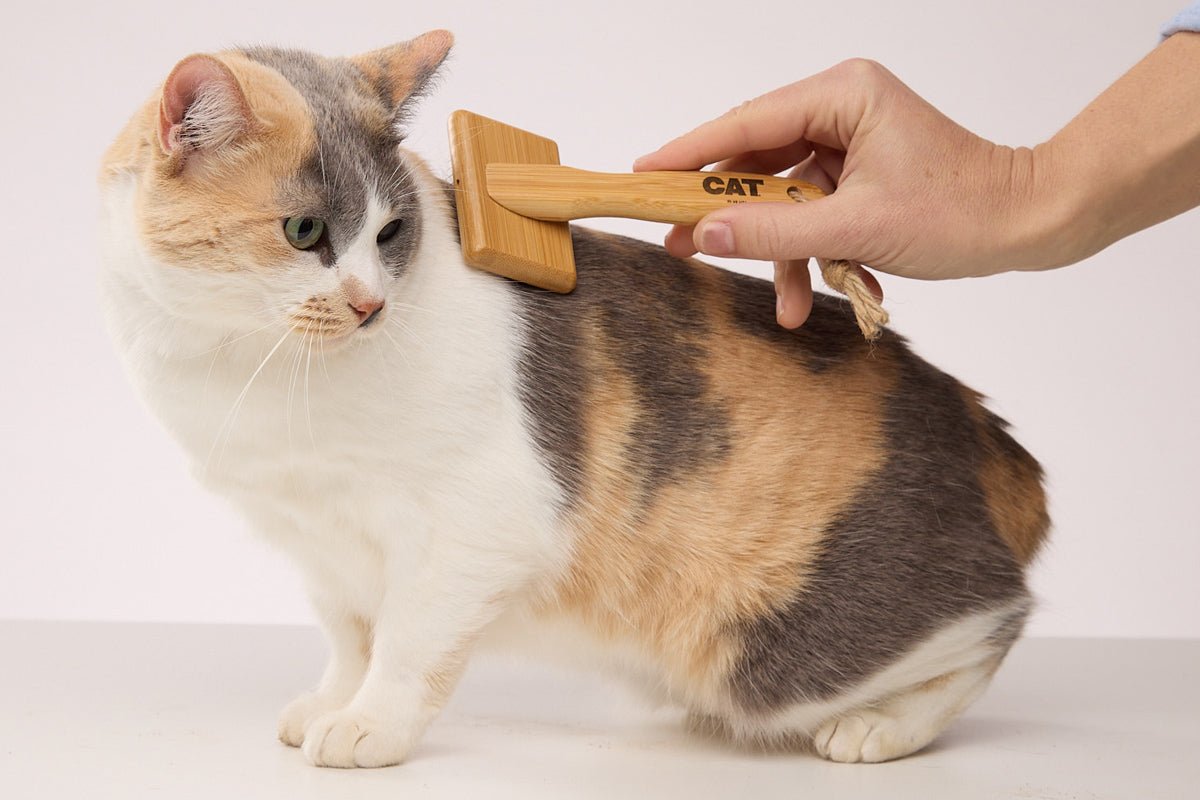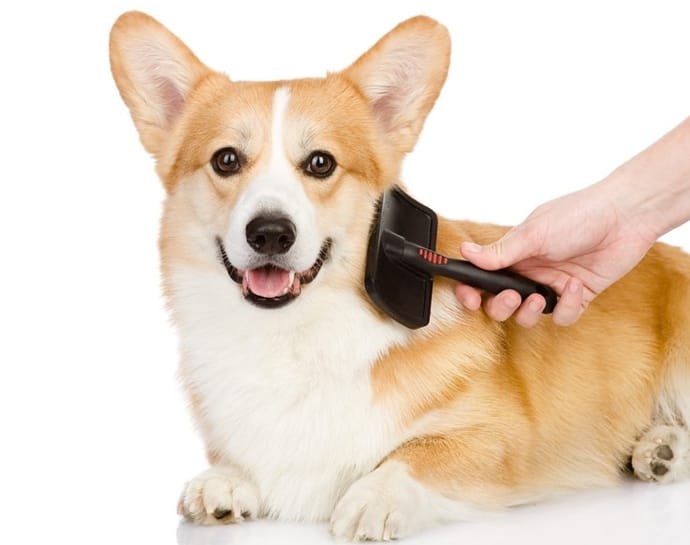Learn how to properly brush your pet’s coat, choose the right brush, and discover the benefits of regular brushing for a healthy, shiny coat.
You want your pet to look good and stay healthy, right? Brushing is important for that. It helps remove loose fur and dirt, and keeps the coat shiny. But, it’s not easy if you don’t know how. You need the right brush for your pet and the right way to brush. This article will show you how to pick the best brush, the benefits of brushing, and what mistakes to avoid. We’ll go through each step together, so by the end, you’ll know exactly what to do.
How to Properly Brush Your Pet’s Coat
Brushing your pet’s coat is more than just a grooming task—it’s essential for maintaining your pet’s health and well-being. Regular brushing helps to remove loose fur, dirt, and debris while also distributing natural oils across the coat, which keeps it shiny and healthy. If you’re wondering how to get started or improve your current routine, this guide will walk you through the essentials.

Choosing the Right Brush for Your Pet
The first step in effective grooming is selecting the right brush. Different types of pets, whether a dog or cat, have different fur types and coat lengths, which means that not all brushes are suitable for every pet.
- Bristle brushes are ideal for short-haired pets, helping to remove loose fur and polish the coat.
- Slicker brushes work well for long-haired pets, aiding in detangling and preventing matting.
- For pets that shed heavily, a shedding control brush is the best choice, as it can help reduce the amount of loose fur around your home.
Step-by-Step Brushing Techniques
Now that you have the right tool, it’s important to know how to use it. Brushing your pet should be a gentle and methodical process. Begin by brushing in the direction of the hair growth. This reduces the risk of pulling or causing discomfort. Focus on one section at a time, especially if your pet has a thick or long coat.
For dogs with dense fur, start by using a slicker brush to remove any tangles, then switch to a bristle brush for a finishing touch. Cats, on the other hand, may require a more delicate approach, particularly around sensitive areas like the face and belly.
Common Mistakes to Avoid During Brushing

Even with the best intentions, mistakes can happen during grooming. Avoid brushing too aggressively, as this can irritate your pet’s skin and lead to discomfort. It’s also crucial to be mindful of areas where the fur is thinner or where the skin is more sensitive. Overbrushing these areas can cause skin irritation.
The Benefits of Regular Brushing for Your Pet
Regular brushing offers numerous benefits for your pet’s health and happiness. It helps to maintain a healthy coat and prevents issues such as matting and shedding. Additionally, brushing can be an excellent opportunity to check for any signs of skin problems or parasites that might otherwise go unnoticed.
Beyond the physical benefits, brushing also strengthens the bond between you and your pet. The act of brushing is soothing for many animals, making it a time of relaxation and connection.
Understanding the Different Types of Brushes and Their Uses
Choosing the correct brush is crucial. There are many different types, each suited to specific needs:
- Bristle Brushes: Best for smooth, short coats. They help distribute natural oils and keep the coat looking shiny.
- Slicker Brushes: Great for detangling and preventing matting, particularly in long-haired breeds.
- Shedding Control Brushes: These are essential for managing heavy shedders, reducing the amount of fur that ends up on your furniture.
For pets with sensitive skin, hypoallergenic brushes made from gentle materials can help prevent irritation. For those environmentally conscious, eco-friendly brushes made from sustainable materials are also available.

How Often Should You Brush Your Pet?
The frequency of brushing depends largely on your pet’s coat type and length. Short-haired pets might only need brushing once a week, while long-haired pets could benefit from daily grooming. During shedding season, even short-haired pets might need more frequent brushing.
Seasonal changes also play a role. In warmer months, when shedding increases, more frequent brushing will help manage the extra fur. If you notice an increase in matting or tangling, this is a sign that your pet needs to be brushed more often.
Troubleshooting Common Brushing Problems
Fur matting and tangles can be challenging, but they’re not impossible to manage. If you encounter a mat, don’t pull or cut it out immediately. Instead, gently work it out with a slicker brush or a dematting tool. For areas that are especially prone to matting, like behind the ears and under the legs, frequent brushing is key.
Some pets may resist brushing, especially if they’ve had a bad experience in the past. If your pet is fearful or anxious, try to make brushing a positive experience by using treats and taking it slow. Over time, your pet will associate brushing with something enjoyable.
When to Seek Professional Grooming Help
There are times when home grooming may not be enough. If your pet’s coat becomes too matted, or if they have skin conditions that require special care, it’s best to seek professional help. Groomers have the expertise and tools to manage even the most difficult coats.
When choosing a professional groomer, look for one with experience and positive reviews. They should be able to work with you to maintain your pet’s coat between visits.

Essential Grooming Products to Pair with Brushing
To get the best results from brushing, consider pairing it with other grooming products. Shampoos and conditioners tailored to your pet’s coat type can enhance the health and appearance of their fur. Detangling sprays are also useful for managing long coats, while shedding solutions can help reduce the amount of loose fur.
Complete grooming kits often come with everything you need, including brushes, combs, and scissors, ensuring you’re fully equipped to keep your pet looking their best.
Brushing is an essential part of pet care that not only keeps your pet looking good but also ensures their health and comfort. By following these guidelines and using the right tools, you can make brushing a positive and effective part of your pet’s routine.
Brushing your pet is not just about looks. It’s about keeping them healthy and happy. By choosing the right tools and brushing regularly, you can make a big difference in your pet’s life. If you found this article helpful, feel free to leave a comment, share it with other pet lovers, or explore more helpful content on our website. Your pet will thank you for it!

FAQs about Brushing
How Often Should You Brush Your Dog?
The frequency of brushing your dog depends on their coat type. Long-haired breeds, like Shih Tzus and Golden Retrievers, generally need daily brushing to prevent mats and tangles. Short-haired breeds, such as Beagles and Boxers, usually require brushing once a week to remove loose hair and debris. Regular brushing not only helps maintain a healthy coat but also reduces shedding and promotes bonding between you and your pet.
What Type of Brush Should I Use for My Dog?
Choosing the right brush is crucial for effective grooming. For long-haired dogs, a slicker brush is ideal as it can penetrate deeper into the coat and remove dead hair. Short-haired breeds benefit from a bristle brush, which helps remove loose hair and dirt. Medium to long-haired dogs often require a pin brush, which gently detangles without damaging the coat. Combs are also useful for working out any tangles or mats.
Can Brushing Help Reduce Shedding?
Yes, regular brushing significantly reduces shedding by removing dead hair before it falls out on its own. It also helps distribute natural oils across your dog’s skin and coat, which can minimize excessive shedding. For dogs prone to heavy shedding, brushing daily or several times a week is recommended.

What Should I Do If My Dog’s Coat Is Matted?
If your dog’s coat is matted, it’s important to address it carefully to avoid causing pain. Start by using your fingers or a comb to gently work through the mats, being careful not to pull on the skin. For severe mats, consider using a detangling spray or seeking professional grooming assistance. Regular brushing helps prevent mats from forming in the first place.
Why Is Brushing Important for My Dog’s Health?
Brushing your dog isn’t just about aesthetics—it plays a vital role in their overall health. Regular brushing stimulates blood circulation, distributes natural oils for a shiny coat, and helps detect skin issues or parasites early. It also removes dirt and dead hair, reducing the risk of skin infections and other health problems.